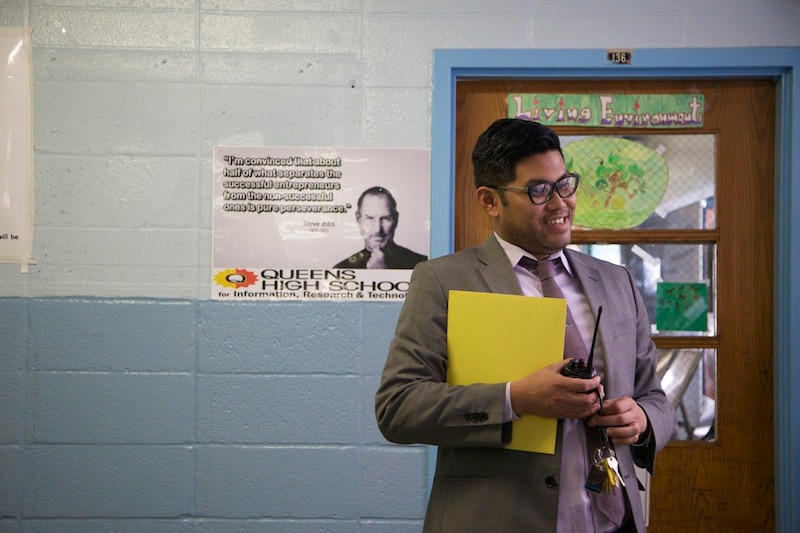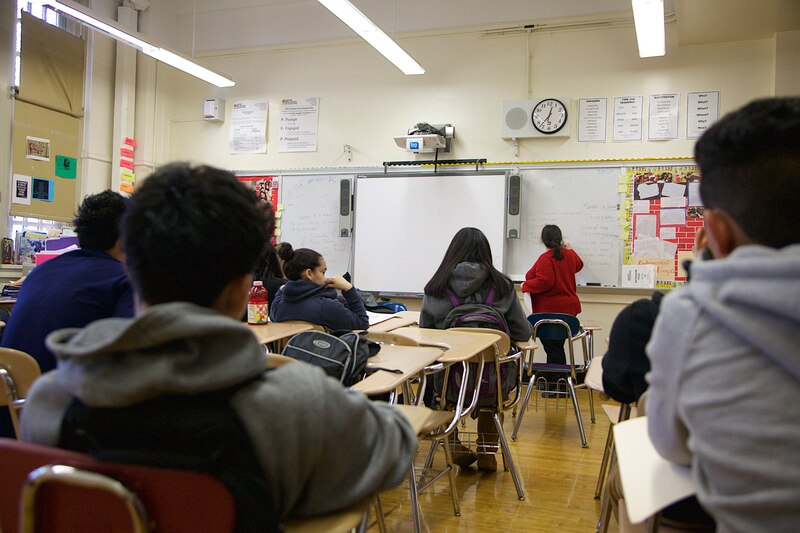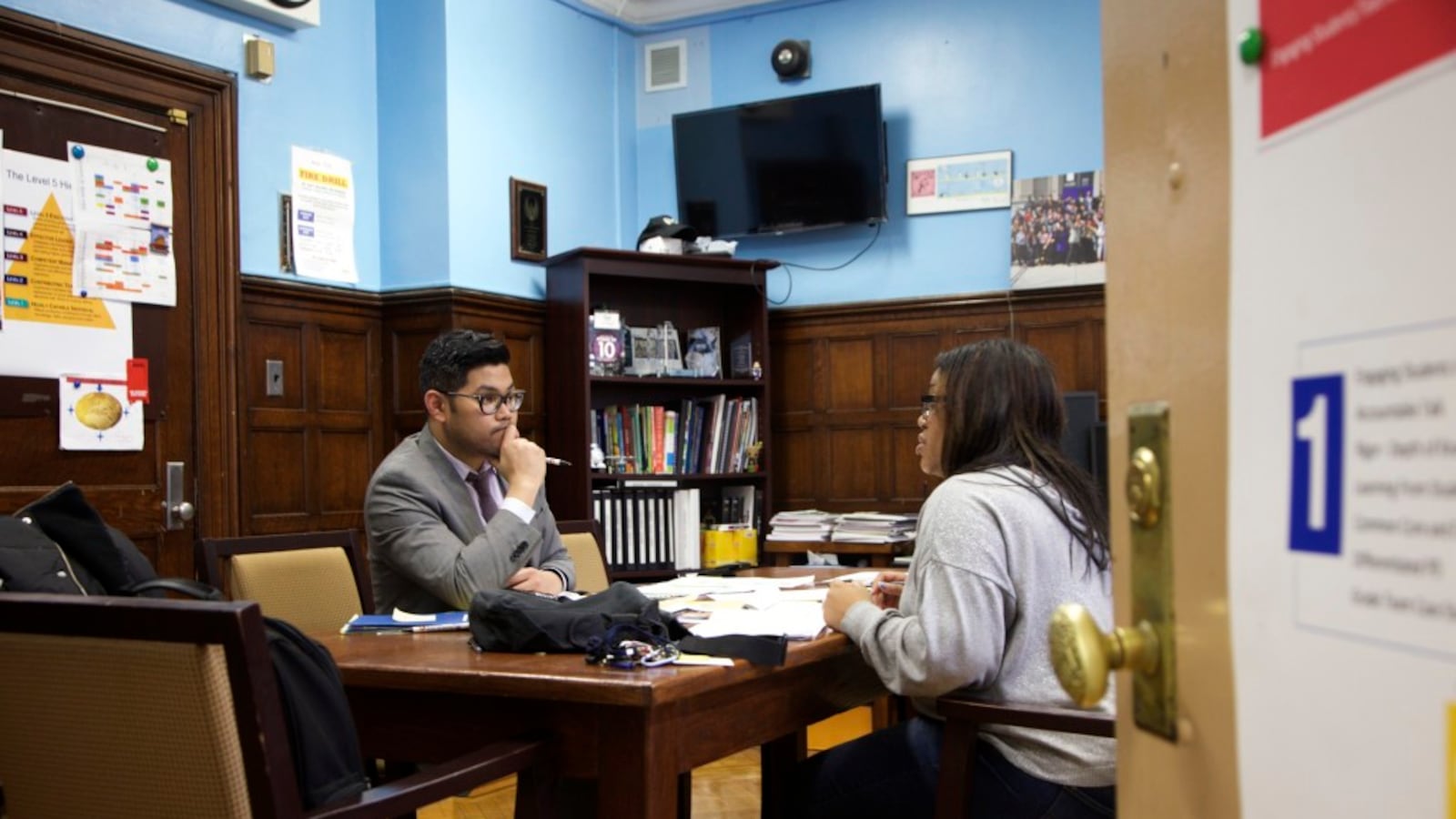Two years ago, then 13-year-old Franklin A. stood on the side of the road in Mexico, staring at the wrecked truck that had been transporting his family. Their truck had crashed and flipped over, six days after they began their flight from the violence in El Salvador, through Guatemala, and then Mexico. Franklin, his mother and siblings escaped unharmed, but without a way to continue their journey.
They had fled their El Salvador home after gang members murdered Franklin’s father. And now, despite the most recent blow, they were determined to push forward, certain that their best chance for safety still lay in the United States. Once they eventually made it to the border by foot and another truck, they were held in a detention center before being sent to New York.
Franklin arrived in Queens in 2014 with an influx of young immigrant children, many of them unaccompanied, escaping violence and danger in their home countries. More than 1,000 of these children have come to Queens since then, all with variations on a similar story — some took planes rather than trucks, a handful already had visas. Many traveled by themselves, but some met up with a parent already living in the U.S. on a visa, whom they might not have seen in years. After crossing the border, they allowed themselves to be apprehended and held in detention centers, primarily in Texas. Those who had relatives in other states were sent to join them to await the court dates that would determine their right to stay.
Franklin, whose last name is being withheld to protect him and his family, was among the first of these immigrants to enroll at the Queens High School for Information, Research and Technology, a small, struggling school with a large and growing percentage of English learners.
The school, known simply as QIRT, would ultimately take in a huge number of new Central American immigrants. In 2013-14, before the influx, the school’s roughly 400 students were approximately 39 percent Hispanic with 14 percent of students in an English Language Learner program. By the start of the 2015 school year, the demographics had shifted: 47 percent of students were Hispanic, and over a quarter of students were in an ELL program. This past school year, there were about 110 Central American immigrants, representing approximately a quarter of the school.
The school became known as a safe space, according to Principal Carl Manalo, and that was part of the draw for young immigrants.
Since Franklin first arrived, the old Far Rockaway High School building that houses QIRT has transformed into a hub aimed at filling the needs of this new immigrant community. The annual coat drive provides winter clothes to the families, who have arrived primarily from tropical climates. A food pantry supplements their groceries. A daycare downstairs, though several decades old, is meant to keep teenage girls who get pregnant — there’s a handful each year — from dropping out.
Adults can take English as a Second Language classes and earn computer certifications alongside the teenagers. There’s personal support as well, as parents flock to Manalo and Spanish teacher Jomarie Figueroa for help navigating the complex, bureaucratic systems of their new country.

But for immigrant students, there are also problems the school can’t solve, like the coyotajes who need to be paid off. Figueroa said bribing one of these clandestine guides who transport people over the border has cost her students between $5,000 and $20,000 per person, depending on the length and difficulty of the journey.
One student in her class, speaking with Figueroa as a translator, said his family paid a coyotaje $7,500 for him to travel from El Salvador to the Texas border on his own. The trip stretched to over two months, from April to June, as he ended up detained in a juvenile facility for 30 days once he’d crossed the border. He arrived at his father’s house in Queens on Father’s Day 2014.
To pay the debt once they’re in the United States, students as young as 15 go to work. Many have typical after-school jobs like babysitting or bagging groceries. Still others, Figueroa has learned, work overnight shifts of 8 to 12 hours at businesses that hire them without documentation and pay them in cash.
Manalo is aware that students take these under-the-table jobs because their families need the money. He has heard the names of businesses that hire them without documentation and at depressed wages, but he doesn’t know how to put an end to the practice without endangering his students. Deportation is a real fear among some of these students, as is not being able to pay the rent, or leaving their families back home without cash.
“If they believe their families back home are in danger, how do we convince them not to work?” he said, referring to the threats that follow unpaid debts to the guides and to corrupt officials in their home countries. “How do we help them?”
The majority of these working students still attend classes despite their full-time jobs, Manalo said, at least for a while. But some still see these immediate, cash-upfront jobs, not education, as the key to unburdening their families.
Manalo said an Immigration and Customs Enforcement raid on one of these businesses had some students too scared to come to school, dropping the school’s attendance rates, normally in the high 80s, down to 77 percent. Any white van, any knock on the door, Manalo said, had students too afraid to leave home.
Despite its small size and unimpressive test scores, QIRT draws immigrant families seeking a safe environment. During the last round of immigration raids, Manalo personally went around to classrooms to reassure students that they couldn’t be pulled out of school and arrested without a warrant.
“And a warrant is only if you’ve done something really terrible,” Manalo assured the students.

In a classroom buzzing with Valentine’s Day candy sales, Figueroa questioned if the tiny high school is the right place to handle the influx of immigrants that pushed English Language Learner rates from 14 percent in 2012 to over 26 percent three years later. Only about 55 percent of QIRT students will graduate from high school in four years, and 28 percent will go on to college. The school offers few Advanced Placement classes, although some classes can be taken for State University of New York credit.
When the young immigrants and unaccompanied minors first started enrolling in the school two years ago, there were few teachers who spoke Spanish. That meant that up until this year, the non-English speaking students were all lumped together in one class, Figueroa said, no matter if they were beginning or intermediate learners.
Further complicating the placement of these students is the fact that some arrive with an interrupted education, or no formal education whatsoever. They often can’t be placed in grades solely according to their age given how far behind they are in the material. One student, according to Manalo, who recently arrived in the country and enrolled in the school within a matter of days, will age out of this neighborhood school before he has a chance to graduate — a common problem at QIRT. The new student would do best at a transfer school for older students, but there simply isn’t one in the area.
The school is beginning to adjust to its changing demographics. Starting last year, Regents subjects at the school were co-taught by a subject-area teacher working with an English as a Second Language aide in a kind of dance of strengths that ESL coordinator Jenna Ponomarova says works well. Better, certainly, than teaching multiple classes of immigrant minors on her own, which is what she did in past years.
In one ESL classroom, students sit together in a circle and chatter in Spanish as their teacher quiets them down. Some have only recently arrived in the country. The majority of them miss their homes in El Salvador, Guatemala or the Dominican Republic, but want to stay in the U.S. for the economic opportunities. They’d go home for a visit, perhaps, but they say it’s too dangerous to stay there permanently. One student in the back of the room, however, sitting apart from the group, shakes his head no without looking up: he’d like to go back home.

Valerie Cruz believes she’s lucky. Although she arrived in the United States around the same time as the unaccompanied minors, Cruz traveled with her mother, taking an airplane from El Salvador to New York City, with visas in hand.
Cruz spoke nearly fluent English upon her arrival thanks to private school back home — she now often accompanies other students to the nurse’s office to translate as the school still lacks nurses fluent in Spanish. Her first memory of New York is standing in Times Square for New Year’s Eve, shivering in a sweatshirt and leggings better suited to a winter in El Salvador.
She tested out of the ESL classes, and is part of the school’s model United Nations, as well as a program exploring climate change hosted by the New York Times. She’d like to attend Columbia University in a few years. But she says she’ll need scholarships and, like many of her peers, she expects to also get a job to help her mother and sister.
“I’ll need to work to help pay the rent,” the junior said, with a smile held tight by braces. “It’s just a reality I have to accept.”
As a sophomore at QIRT last year, Franklin, the teen who fled El Salvador after his father’s murder, consistently earned praise from his principal and his teachers for his fluent English and his dedication in class. He’d like to stay in New York City for the time being, and one day, join the Air Force as a pilot.
“It was difficult. I was depressed,” he said about the months after his father’s death. “But here at school, my teachers, they wouldn’t have known it.”
This story originally appeared in School Stories, a publication produced by students at Columbia University’s Graduate School of Journalism.
Editor’s Note: This post has been corrected with updated figures on the number of newly arrived immigrant children in Queens.


